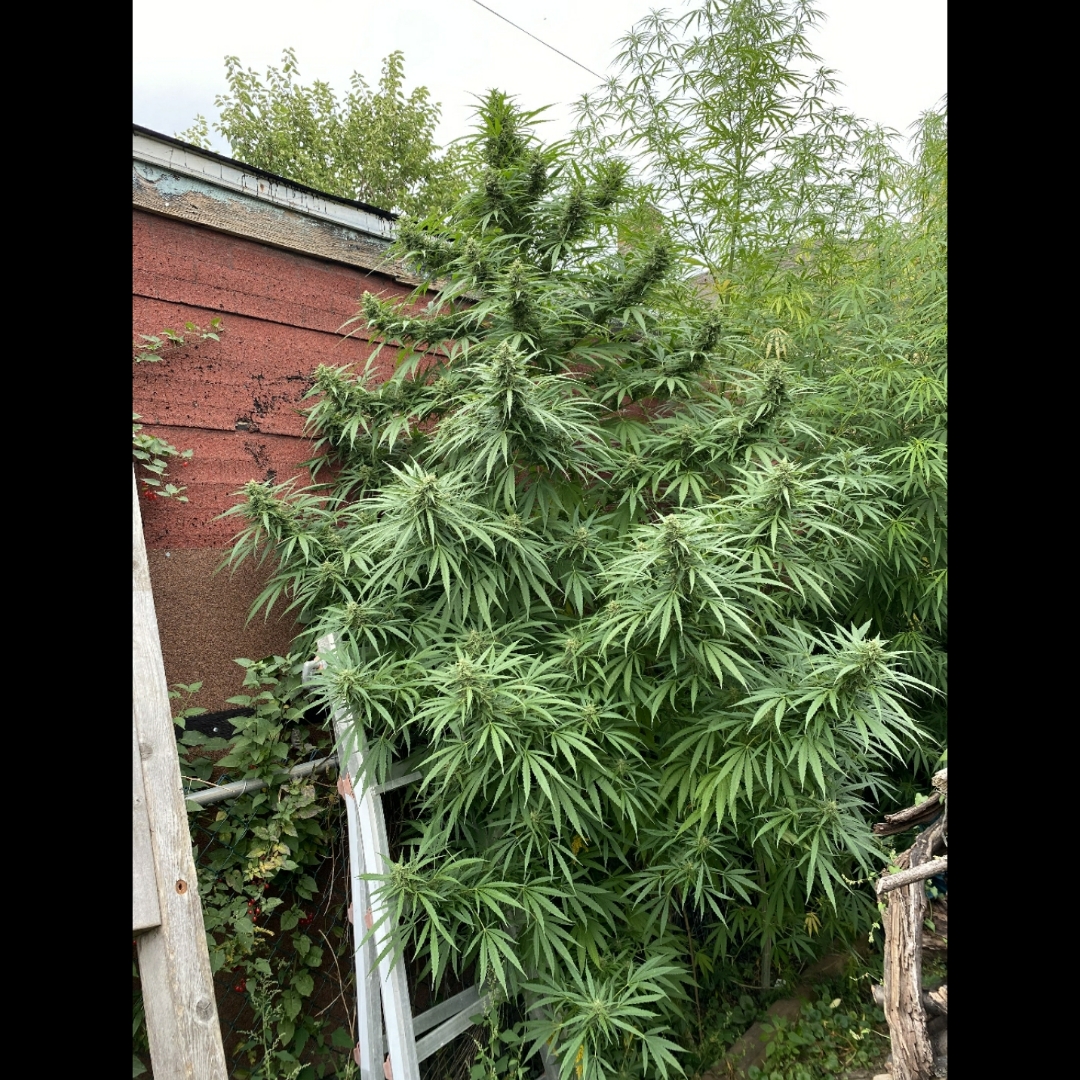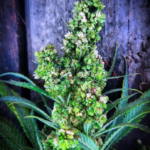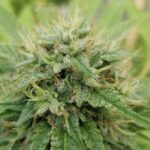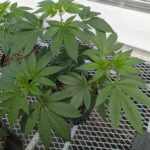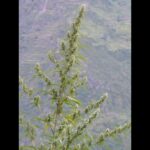‘Ukhrul (Naga)’ at 40°N – a customer’s photo from last year, this individual performing well at such a northern latitude.
Collected by Angus in the highlands of Ukhrul district, Manipur, Northeast India, close to the border with Burma.
This landrace is cultivated to produce ganja for the West Bengal and Bangladesh market by ethnic Naga communities, who grow cannabis as a cash crop in very large fields in the highlands. The ganja is about as heavily seeded as ganja gets.
Naga communities don’t have a long or widespread tradition of consuming ganja, unlike their neighbours the Meitei, for who cannabis is a common household herb.
The scale and quality of Naga cannabis fields contrasts with the much smaller fields and more careful cultivation employed by some Meitei households, where the ganja will be smoked by the household and friends.
The best accession we obtained from Manipur was from a small plot in a Meitei village, where each year the family was careful to save seed from the best plant(s) to sow next season. The potency of the best batch of ganja was high – north Indian sadhus with who I later shared this batch were very impressed by the strength.
For Naga highland regions, historical records such as the Indian Hemp Drugs Commission suggest villages began producing ganja commercially to answer demand from Bengalis and other Indians. These communities migrated eastward into the frontier highlands of Northeast India in large numbers during the late 19th Century, particularly with the expansion of tea production into Assam and Nagaland under the British Empire.
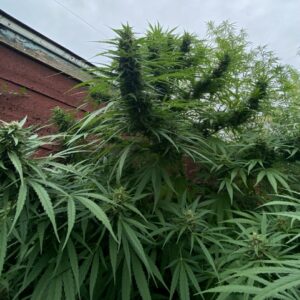
Another shot of the same Ukhrul plant at 40°N
In my conversations with Naga men, they were keen to emphasize their distance from ganja use, which they emphasized was an ‘Indian’ custom. By contrast, in my conversations with Meitei folks, tokers enthusiastically elaborated on cannabis vocabulary and techniques for cultivation, curing, preparation, and smoking.
Over the border inside Burma, there are similar histories and traditions. Some communities appear to have a long or close connection with cannabis (Shan / Tai Yai). Others seem to have originally acquired cannabis as a cash crop to sell to Indians such as soldiers stationed in Burma during British rule (Karen). Other communities often strongly stigmatize cannabis as a foreign disreputable habit (Bamar).
In the background of the photo are some tall Himalayan plants.
For an excellent Shan / Tai Yai ganja landrace, check out our accession named ‘Burmese’. If you’re looking for potent landraces, the place to look is in tropical ganja populations, aka ‘Sativas’. And if you’re looking for good real Sativas, then arguably the best place to look is in Tai strains, i.e. landraces from Laos, Thailand, and the Shan regions of Burma.
